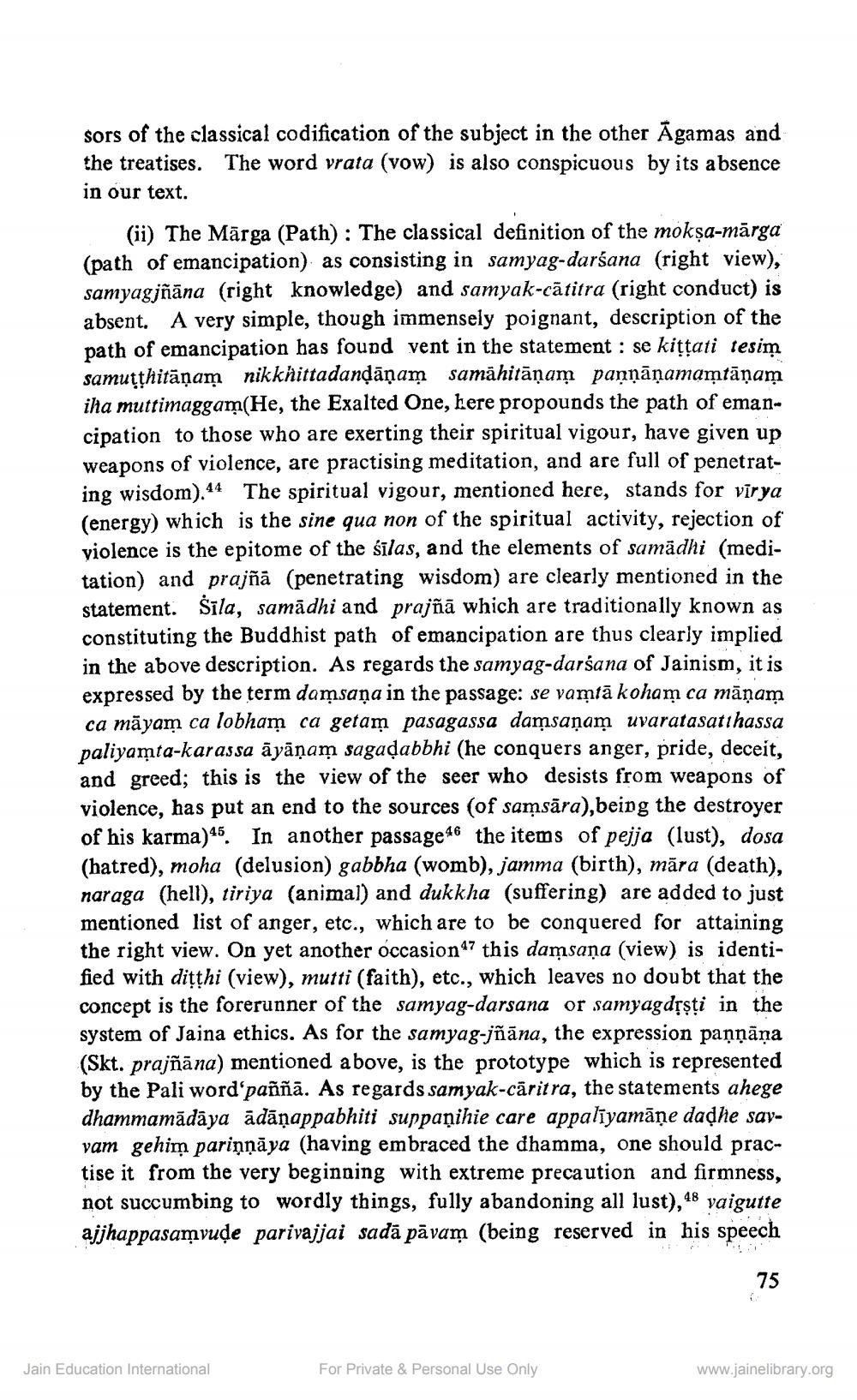________________
sors of the classical codification of the subject in the other Āgamas and the treatises. The word vrata (vow) is also conspicuous by its absence in our text.
(ii) The Mārga (Path) : The classical definition of the mokşa-mārga (path of emancipation) as consisting in samyag-darśana (right view), samyagjñāna (right knowledge) and samyak-cātitra (right conduct) is absent. A very simple, though immensely poignant, description of the path of emancipation has found vent in the statement : se kițțati tesim samutthitānam nikkhittadandānam samāhitāņam paņņāņamamtānam iha muttimaggam(He, the Exalted One, here propounds the path of emancipation to those who are exerting their spiritual vigour, have given up weapons of violence, are practising meditation, and are full of penetrating wisdom).44 The spiritual vigour, mentioned here, stands for vīrya (energy) which is the sine qua non of the spiritual activity, rejection of violence is the epitome of the śīlas, and the elements of samadhi (meditation) and prajñā (penetrating wisdom) are clearly mentioned in the statement. Sīla, samadhi and prajñā which are traditionally known as constituting the Buddhist path of emancipation are thus clearly implied in the above description. As regards the samyag-darśana of Jainism, it is expressed by the term damsaņa in the passage: se vamtā koham ca māņam ca māyam ca lobham ca getam pasagassa daņsaņam uvaratasatıhassa paliyamta-karassa āyāņam sagadabbhi (he conquers anger, pride, deceit, and greed; this is the view of the seer who desists from weapons of violence, has put an end to the sources (of samsāra),being the destroyer of his karma)45. In another passage46 the items of pejja (lust), dosa (hatred), moha (delusion) gabbha (womb), jamma (birth), māra (death), naraga (hell), tiriya (animal) and dukkha (suffering) are added to just mentioned list of anger, etc., which are to be conquered for attaining the right view. On yet another occasion 47 this daņsaņa (view) is identified with dițțhi (view), mutti (faith), etc., which leaves no doubt that the concept is the forerunner of the samyag-darsana or samyagdssti in the system of Jaina ethics. As for the samyag-jñāna, the expression paņņāņa (Skt. prajñāna) mentioned above, is the prototype which is represented by the Pali word'paññā. As regards samyak-cāritra, the statements ahege dhammamādāya ādāņappabhiti suppaņihie care appalīyamāṇe dadhe sayvam gehim pariņņāya (having embraced the dhamma, one should practise it from the very beginning with extreme precaution and firmness, not succumbing to wordly things, fully abandoning all lust), 48 vaigutte ajjhappasamude parivajjai sadā pāvam (being reserved in his speech
75
Jain Education International
For Private & Personal Use Only
www.jainelibrary.org




